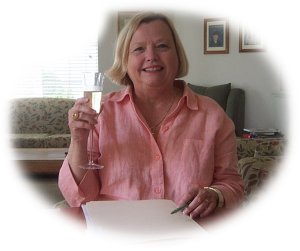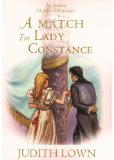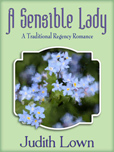Author wonders, do you read for character, plot, or setting?
 Judith Lown is the author of A Match for Lady Constance (Avalon) and A Sensible Lady: A Traditional Regency Romance (eFrog Press). She is hard at work on a sequel but still makes time to blog.
Judith Lown is the author of A Match for Lady Constance (Avalon) and A Sensible Lady: A Traditional Regency Romance (eFrog Press). She is hard at work on a sequel but still makes time to blog.
A perennial question for readers is: Do you read for character, plot, or setting? Of course, this is an artificial choice. Most of us read for all three—or at least we don’t want a major disappointment in any of these three elements.
But, in a romance novel, plot and setting will not compensate for undifferentiated or unconvincing characters. The plot, after all, is already known: Man meets woman. Man loses woman/Woman loses man. Man and woman find each other. Even if this plot plays out in an engrossing setting, it still will fall flat if there is not something unique about this particular man and this particular woman. If the plot is satisfying, much of it will be the natural playing out of the character and motivations of this man and this woman.
Do writers create or discover their characters? I’m not sure. I do know that characters won’t be shy about telling a writer what they will or will not do. Lady Constance actually let me know that she was quite worried that I was the one who was writing her story. She wasn’t at all certain that I was up to the task.
But where do these characters come from?
 My first two novels began with scenes that I carried around in my brain for years: A Match for Lady Constance grew out of a scene of an ill-matched pair being discovered alone in a library—a social taboo in Regency England. A Sensible Lady grew out of a scene of a lady skipping stones on a lake and being surprised by a gentleman skipping a stone from behind her. Everything else in those two books: the physical appearance of the main characters, their personalities, their “issues”—everything flowed out of the seed scenes.
My first two novels began with scenes that I carried around in my brain for years: A Match for Lady Constance grew out of a scene of an ill-matched pair being discovered alone in a library—a social taboo in Regency England. A Sensible Lady grew out of a scene of a lady skipping stones on a lake and being surprised by a gentleman skipping a stone from behind her. Everything else in those two books: the physical appearance of the main characters, their personalities, their “issues”—everything flowed out of the seed scenes.
Now, I am working on my first sequel. Jack and Drusilla, the hero and heroine of my work-in-progress, were supporting players in A Match for Lady Constance. So when I started to write their story, I had some idea of who these two people are, why they are drawn to each other, and what roadblocks keep them from instantly, mutually, recognizing that they want to spend the rest of their lives together.
 But guess what? From the start of my thinking about Jack and Drusilla, I was really clear about the setting for their book. Don’t ask me why this story had to take place in Boston. All I know is that it had to. Getting Drusilla to Boston was no easy matter, nor was discovering the details of her life once she got there. She is, after all, a truly Sensible Lady—much more sensible than Katherine, the heroine of my book by that title. So why in the world would Drusilla go gallivanting off across an ocean, away from family and friends? In this case setting required character development, which created plot.
But guess what? From the start of my thinking about Jack and Drusilla, I was really clear about the setting for their book. Don’t ask me why this story had to take place in Boston. All I know is that it had to. Getting Drusilla to Boston was no easy matter, nor was discovering the details of her life once she got there. She is, after all, a truly Sensible Lady—much more sensible than Katherine, the heroine of my book by that title. So why in the world would Drusilla go gallivanting off across an ocean, away from family and friends? In this case setting required character development, which created plot.
I don’t want to think of all the cul de sacs I’ve written into, trying to tell Drusilla and Jack’s story. But I have learned that the only way to get out of those cul de sacs is to go back to my characters and let them tell me more about themselves.
Please share
Tell us about your writing process. Do you ever start with setting? Do your characters tell you what to do?
Tags: A Sensible Lady, character, Judith Lown, plot, setting, traditional Regency romance